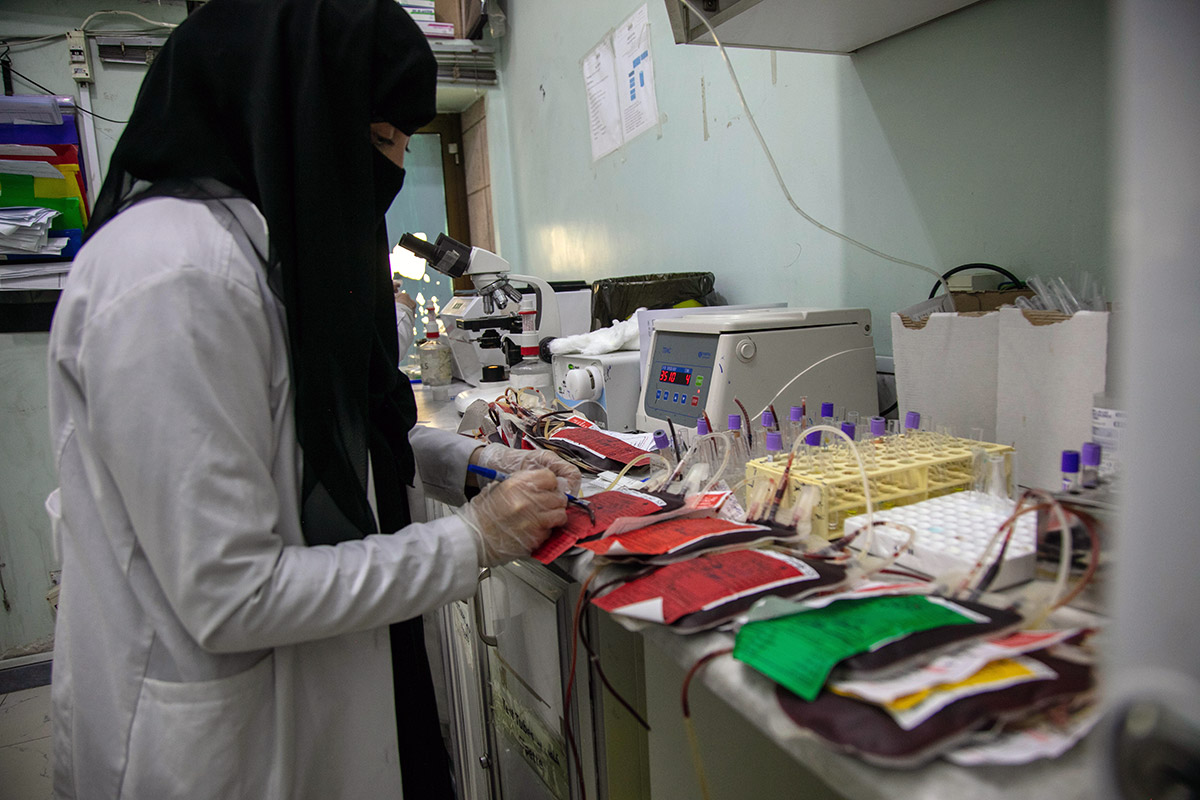 1 December 2024 Sana’a/Aden, Yemen – A single bag of blood can mean the difference between life and death. Blood banks are indispensable, especially during humanitarian crises. In Yemen, the National Blood Transfusion and Research Centre, in collaboration with the National Central Public Health Laboratory and its governorate branches, provides essential services that save lives.
1 December 2024 Sana’a/Aden, Yemen – A single bag of blood can mean the difference between life and death. Blood banks are indispensable, especially during humanitarian crises. In Yemen, the National Blood Transfusion and Research Centre, in collaboration with the National Central Public Health Laboratory and its governorate branches, provides essential services that save lives.
Over the past 8 years, WHO and the World Bank have partnered on projects to support 9 blood transfusion centres in Yemen with procurement and capacity-building to sustain these lifesaving services. Since 2021, this support has been provided via the Emergency Human Capital Project which delivers essential health and nutrition services in Yemen and is widely regarded as the backbone of the country’s health sector.
National blood transfusion centres ensure a steady stockpile of blood and blood products are available when and where they are needed. This involves maintaining efficient storage and supply systems for public hospitals and emergency service providers, enabling swift distribution to those in need.
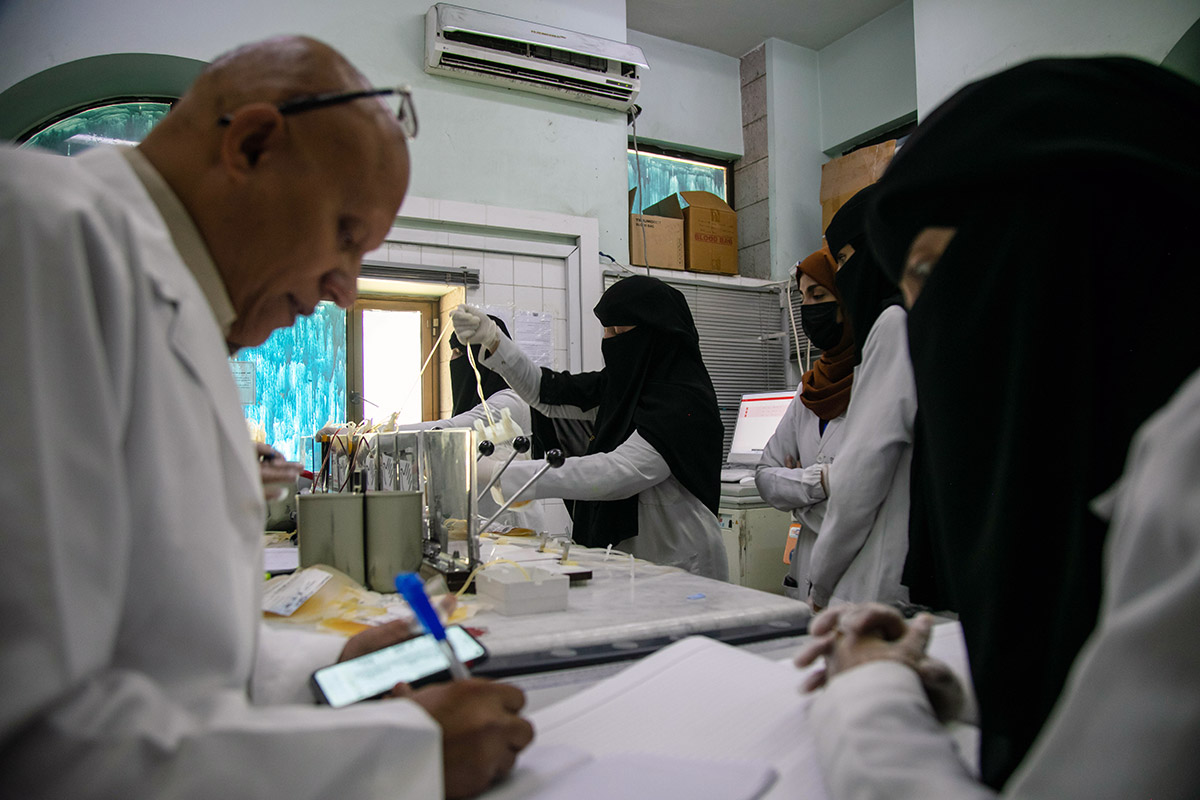 Despite the critical functions it provides, the National Blood Transfusion Centre in Sana’a struggles to manage and track blood donations, testing and distribution due to its reliance on paper-based processes. These manual records are time-consuming and susceptible to human errors which can cause significant delays in emergencies, hindering the timely provision of lifesaving blood.
Despite the critical functions it provides, the National Blood Transfusion Centre in Sana’a struggles to manage and track blood donations, testing and distribution due to its reliance on paper-based processes. These manual records are time-consuming and susceptible to human errors which can cause significant delays in emergencies, hindering the timely provision of lifesaving blood.
To address these issues, WHO and the World Bank have supported the upgrading of the Centre’s information management system and the training of its staff for a smooth transition from manual to electronic records, connecting branches in Hajjah, Hudaydah, Ibb and Sa’ada governorates. This upgrade will streamline operations, enhance data accuracy and accessibility and, ultimately, save more lives.
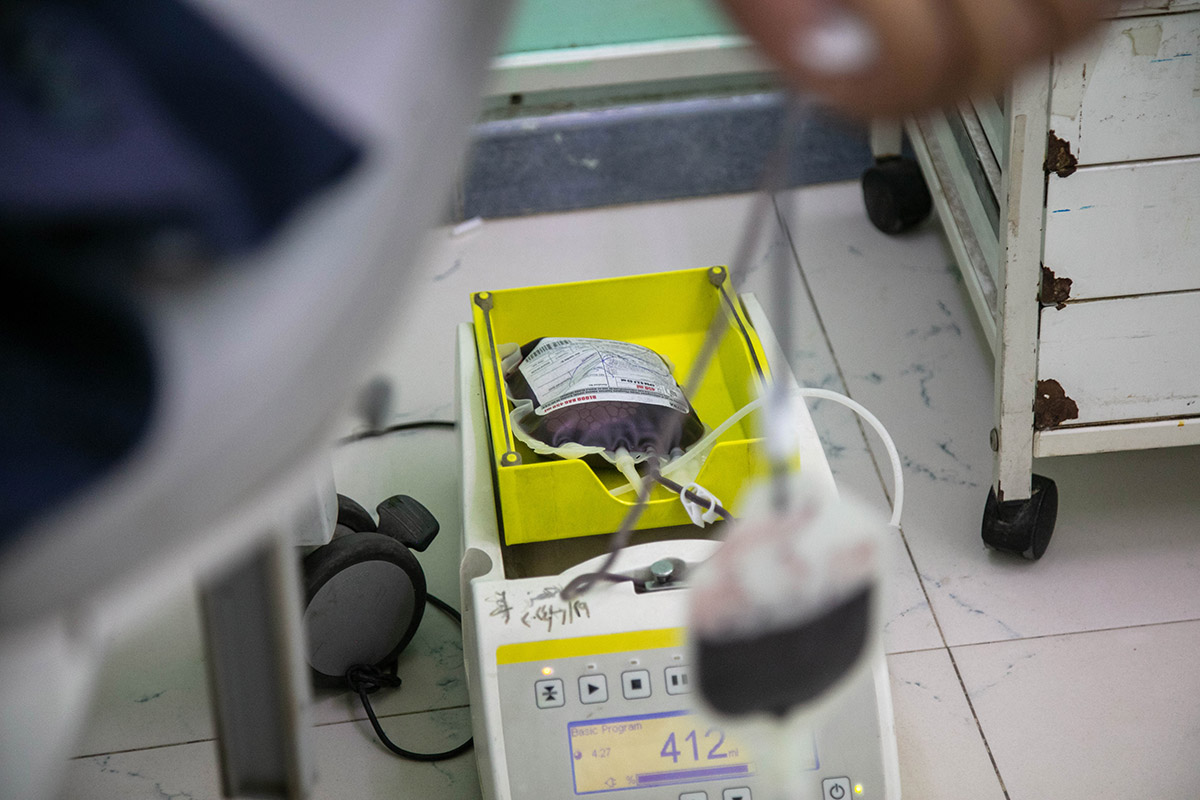 “The rollout of the new system will occur in 3 phases. The first phase integrates departments within the National Blood Transfusion and Research Centre. The second links the Centre’s branches across governorates with the central hub while the third phase connects blood banks in all public and private hospitals to a standardized system,” said the technical manager of the National Blood Transfusion and Research Centre Dr Adnan Al Hakimi.
“The rollout of the new system will occur in 3 phases. The first phase integrates departments within the National Blood Transfusion and Research Centre. The second links the Centre’s branches across governorates with the central hub while the third phase connects blood banks in all public and private hospitals to a standardized system,” said the technical manager of the National Blood Transfusion and Research Centre Dr Adnan Al Hakimi.
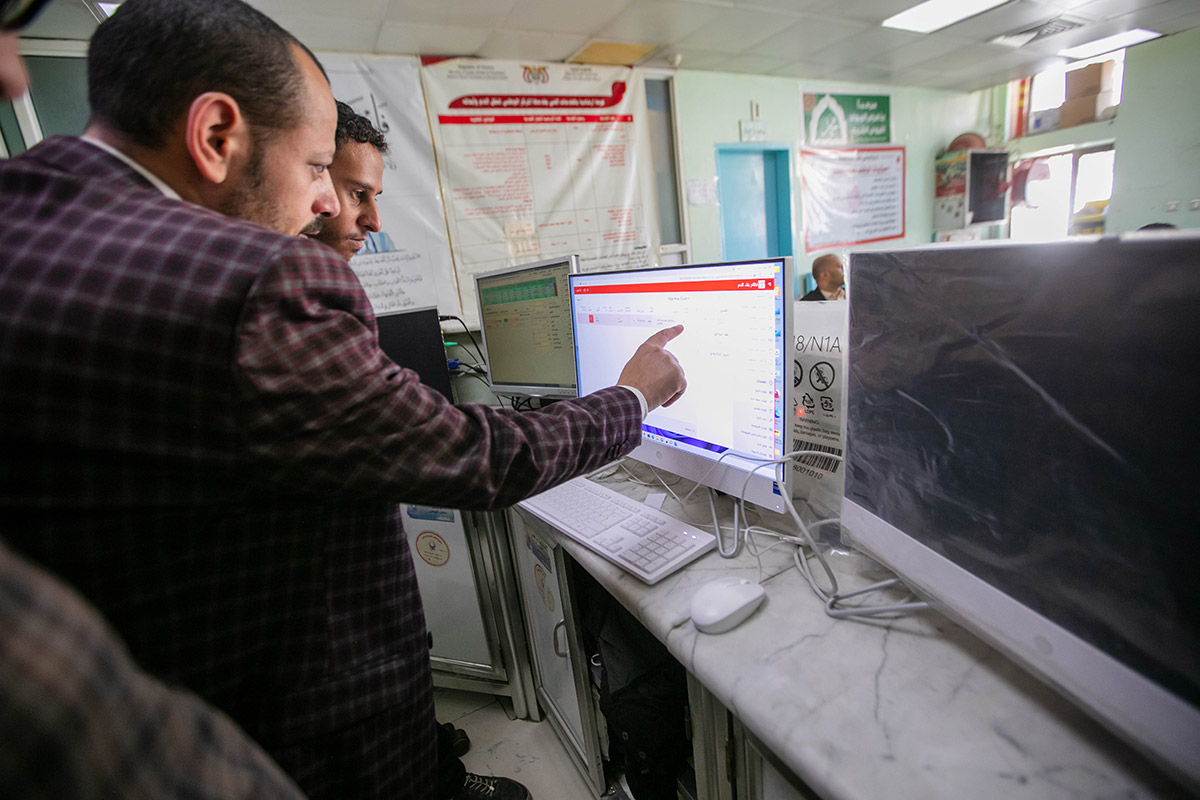 Blood samples are taken from individuals to determine their blood type and test for infectious diseases like hepatitis as part of a process of ensuring the blood is safe and effective.
Blood samples are taken from individuals to determine their blood type and test for infectious diseases like hepatitis as part of a process of ensuring the blood is safe and effective.
Blood is drawn from patients by a health care professional for testing, transfusions, donations or research at a phlebotomy draw station, typically via venipuncture or a finger stick. It is collected in sterile bags, with anticoagulants to prevent clotting. The blood is then separated into red blood cells, plasma and platelets using a centrifuge. Each component is then tested again.
In the storage department, blood and plasma bags are kept in refrigerators. Red blood cells are stored for up to 42 days, plasma can be frozen for up to a year and platelets are kept at room temperature for up to 5 days. These components are then sent to hospitals and clinics, with priority given to areas facing health emergencies.
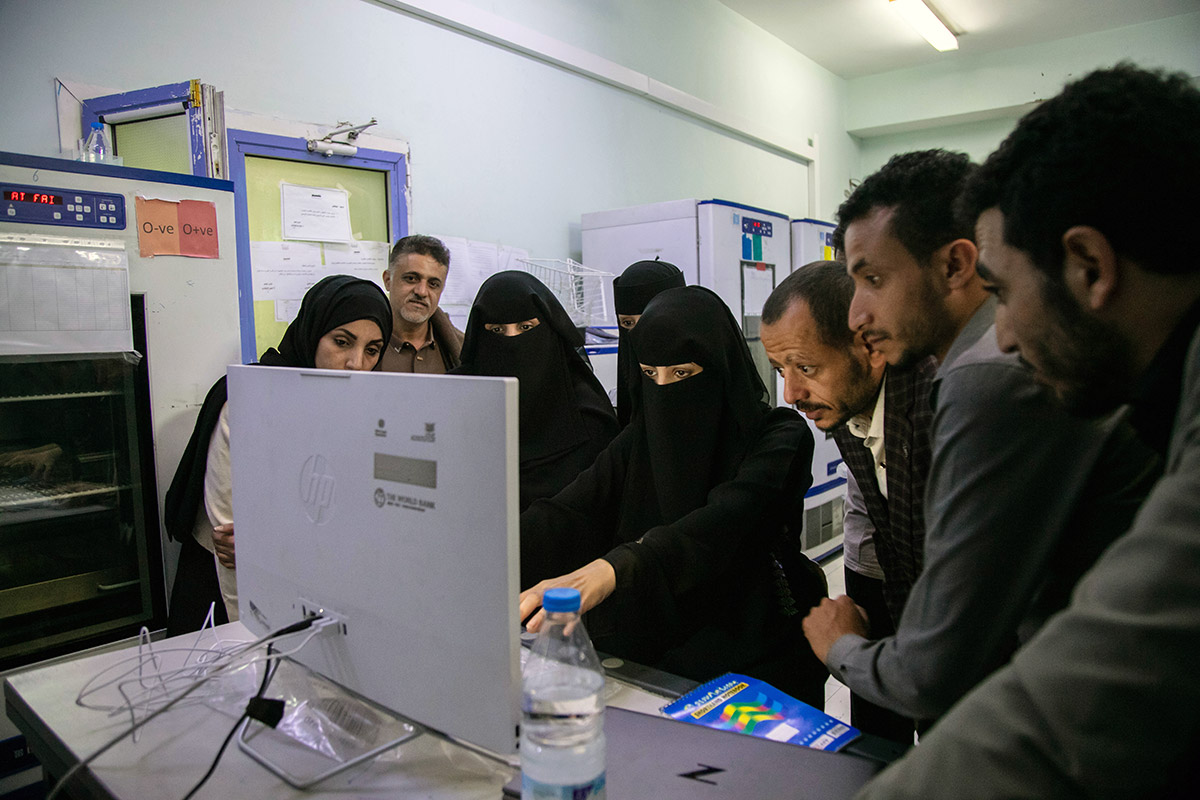 The new system will enable efficient electronic management and tracking of the blood inventory, including donations, expiry dates and available units. It securely stores donor and patient information and provides real-time monitoring of blood supply levels, with notifications for low stock. By integrating processes into a single system, the Centre’s operations will be streamlined.
The new system will enable efficient electronic management and tracking of the blood inventory, including donations, expiry dates and available units. It securely stores donor and patient information and provides real-time monitoring of blood supply levels, with notifications for low stock. By integrating processes into a single system, the Centre’s operations will be streamlined.
Trainees practice their skills by entering patient information into the system before donations, assessing suitability. Trainers guide them on how to input data correctly into the computer system.
“We will now have a comprehensive database of blood donors and patients which will significantly streamline our archiving and documentation processes,” said Dr Ali Aqabat, an Immunohaematology Department health care worker.
“The new system facilitates data entry, reduces errors and diminishes reliance on manual archives. This approach will enhance both the quality and speed of our performance,” added Dr Maria Al Salat, deputy head of a phlebotomy draw station.


